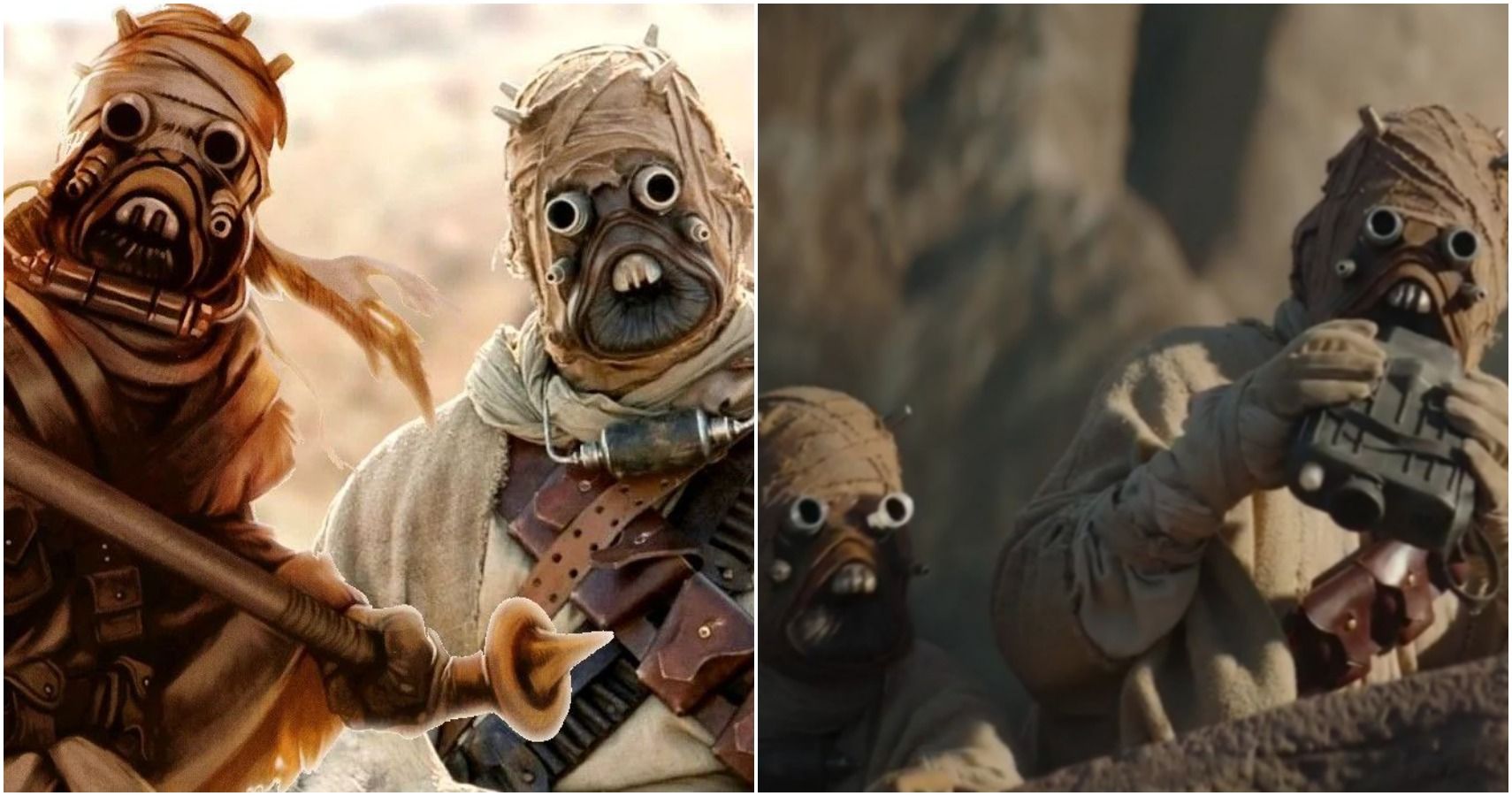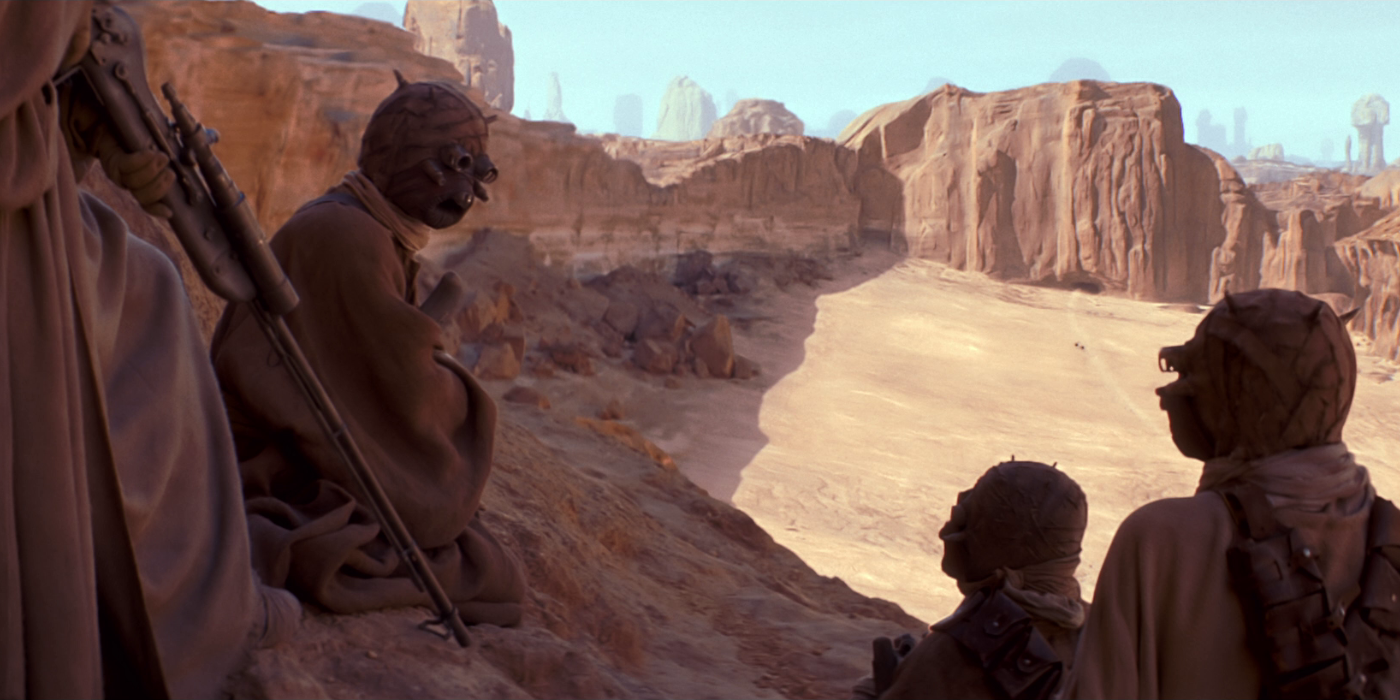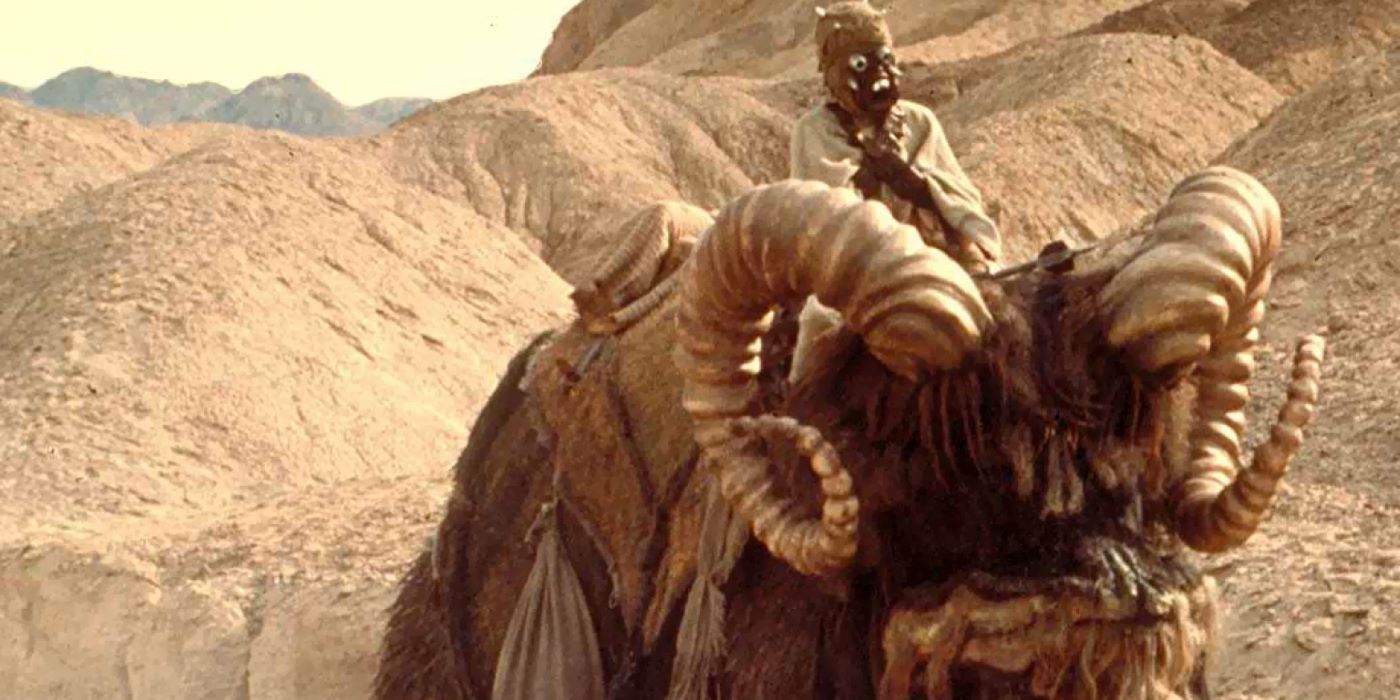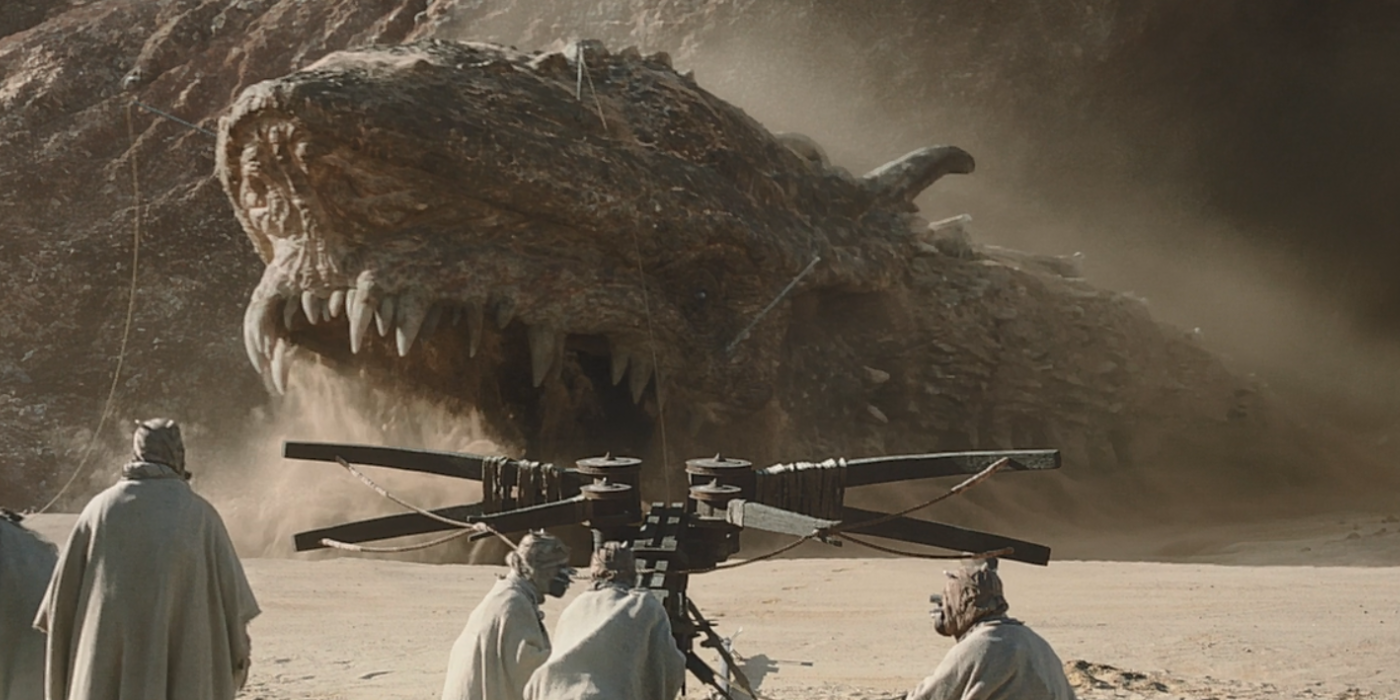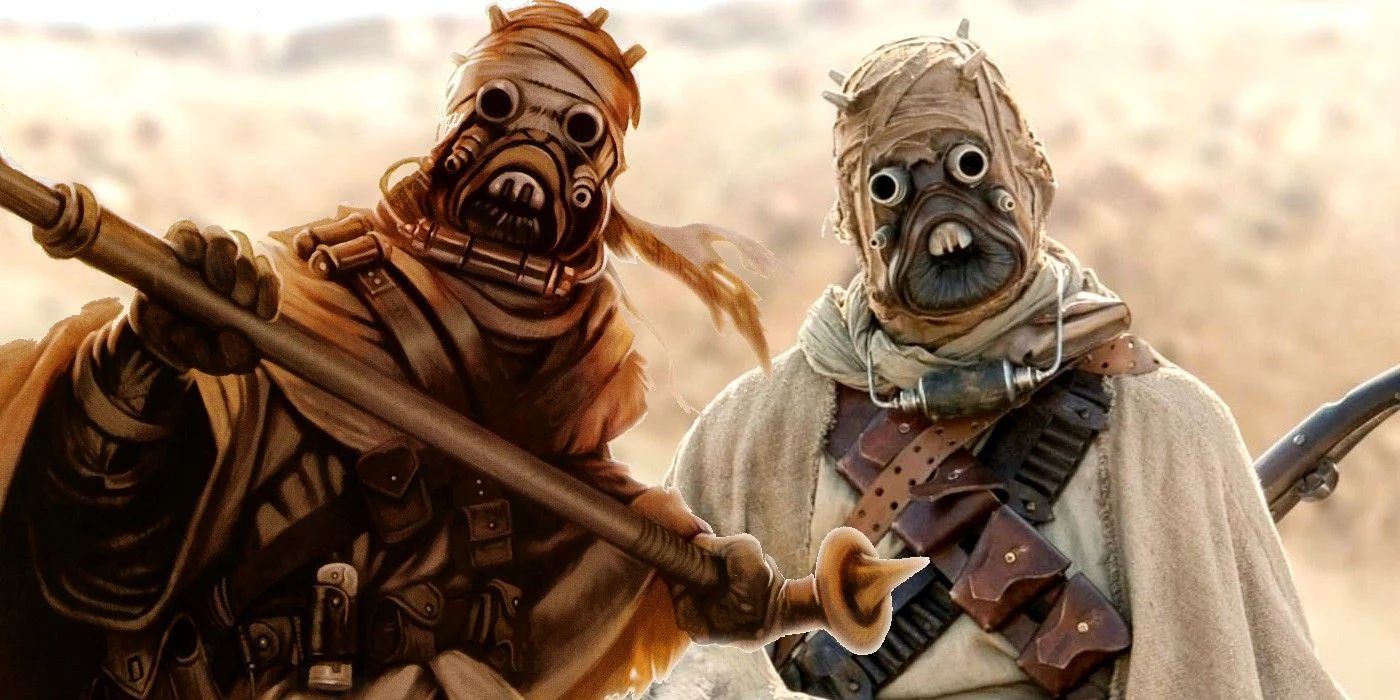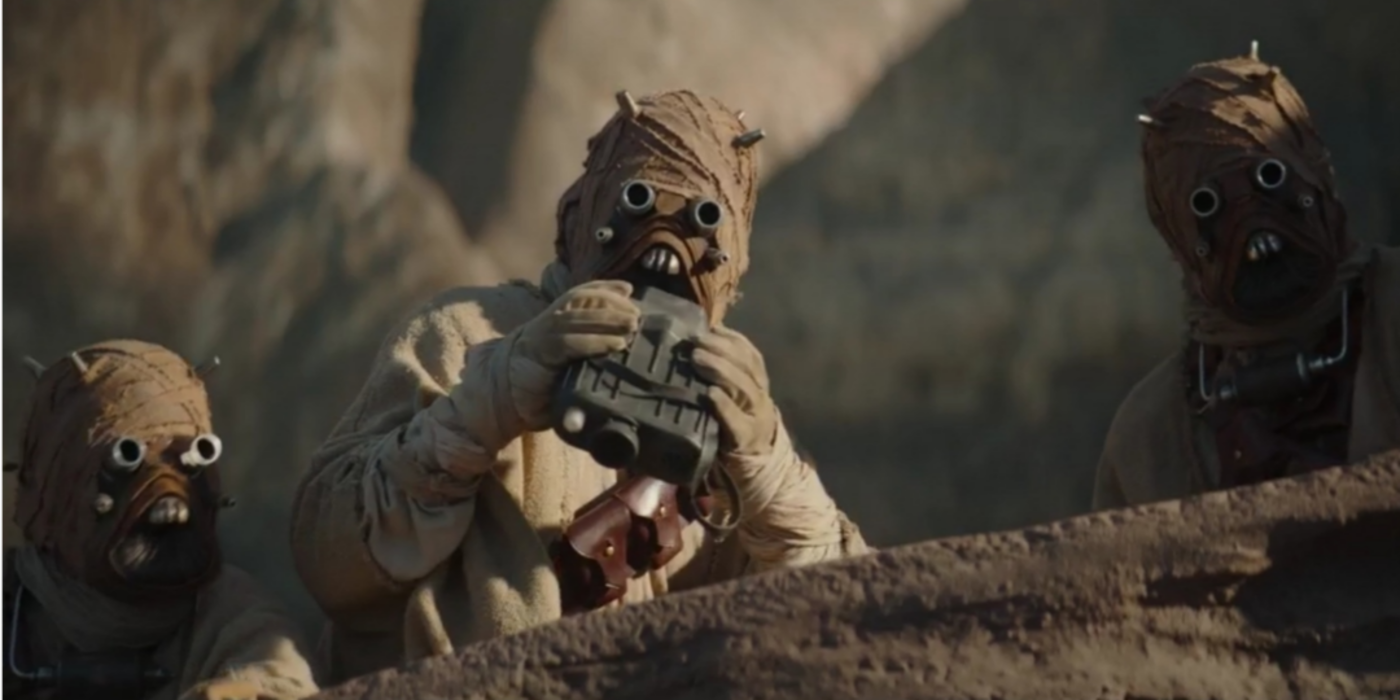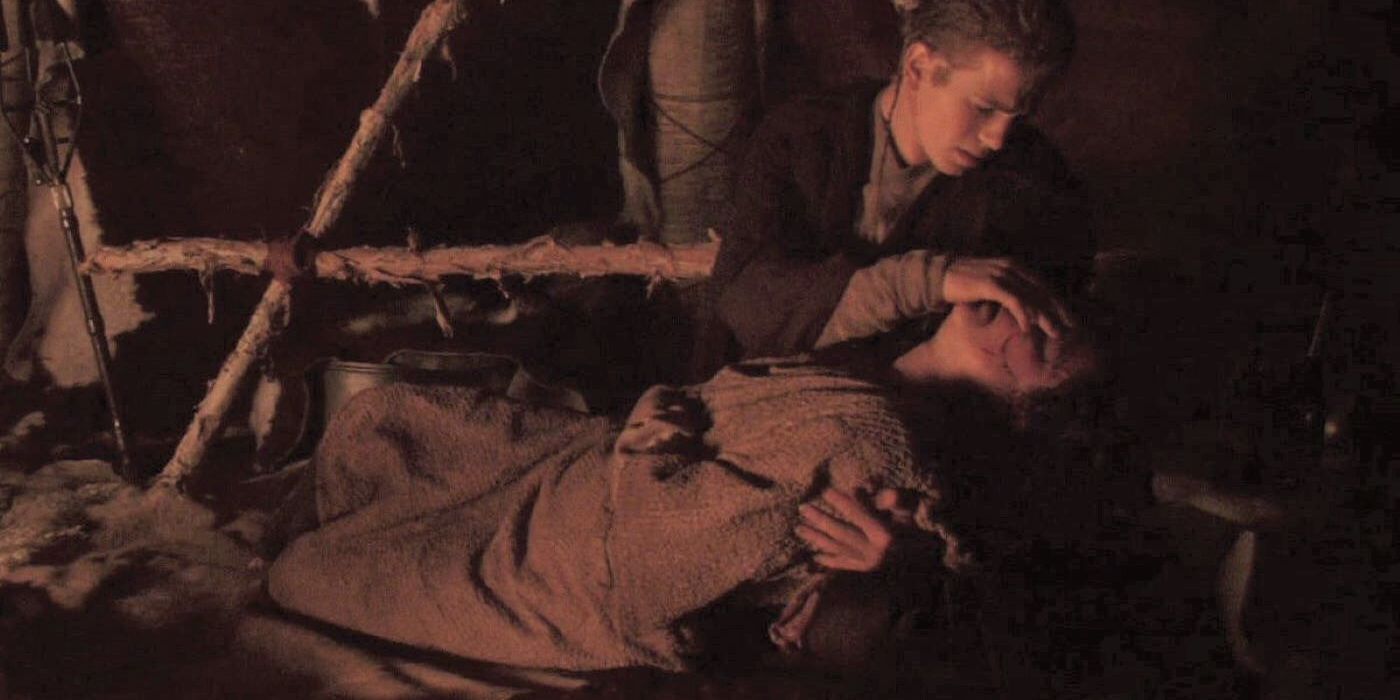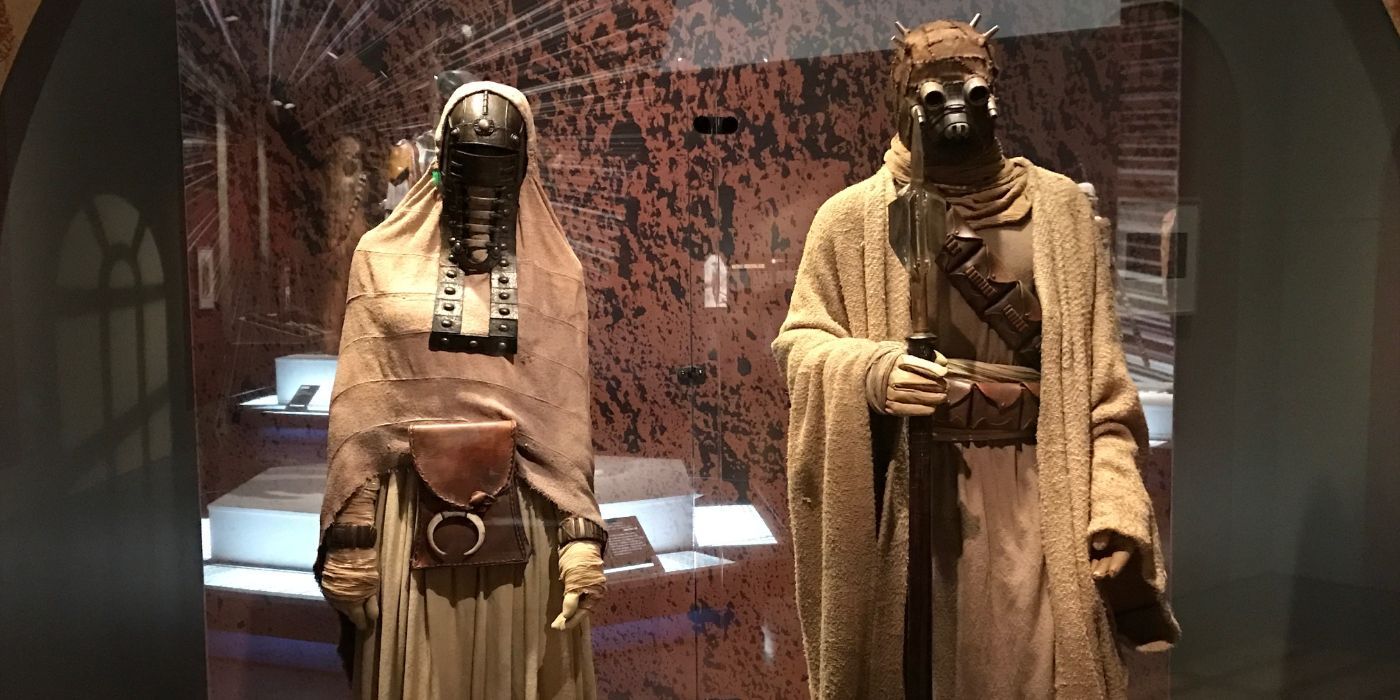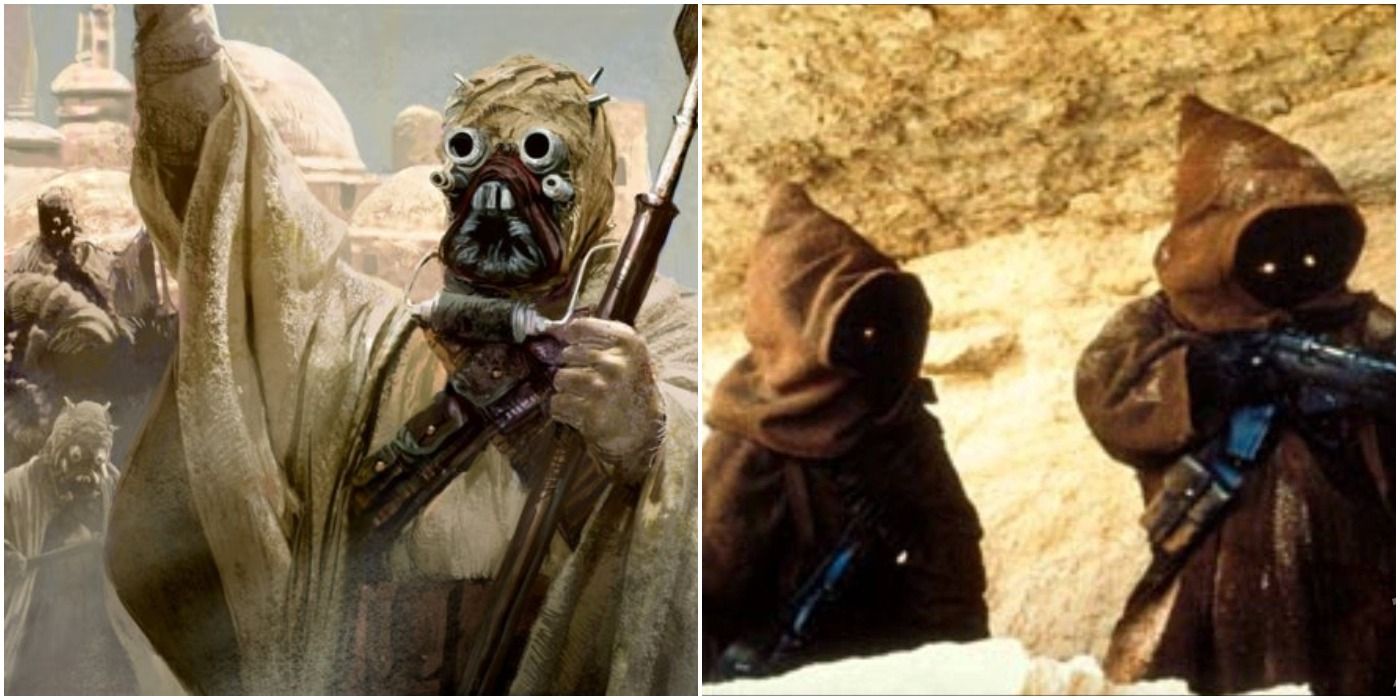The Tusken Raiders, sometimes referred to as Sand People, are a canonical species that show up throughout Star Wars on their native planet Tatooine. They make their first appearance in A New Hope when they encounter a young Luke Skywalker in his search for R2-D2. In this encounter, they scavenge Luke's land-speeder, earning the moniker of raiders.
Both the canon and the Expanded Universe provides fans with a plentiful history of the Tusken Raiders, one that is actually pretty interesting as far as conceptualizing an alien species goes. With a recent appearance in Disney's The Mandalorian, the Tuskens showed fans their compatibility with humans, prompting a slew of questions about their existence.
They Are Hostile To Protect Resources
Naturally, a harsh environment like Tatooine would bring out hostility in any habitant. Settlers of cities, like Mos Eisley and Mos Espa, certainly display a form of hostility through intense resource hoarding and slavery. Colonists of the planet invested in moisture farming as a way to supply the most coveted and taxed resource, water.
The desert itself is quite unforgiving, leaving its dwellers with bleaker reality. In fact, the Tusken's entire lifestyle is scavenging for the sake of survival. They harvest black melons, which Cobb Vanth initially denies in The Mandalorian, as a source of milk. They also know of underground water sources which they guard dearly and will defend if an outsider even gets close to one. They have even domesticated mastiffs for the sake of guarding resources.
Banthas And Their Riders Share A Close Bond
Banthas are the gentle giants and unwilling sacrifices to the Krayt dragon in The Mandalorian. The particularly striking fact about these beasts of burden is that they are bonded to their riders for life.
At the age of seven, Tuskens are given a bantha of the same sex and age. When Tuskens marry and mate, so do their banthas. When a bantha or Tusken dies before the other, the remaining party is sent into the desert to find another partner. Knowing this complexity makes the sacrifice of the banthas much more jarring than simply not knowing. They also produce milk.
They Must Kill A Krayt Dragon To Become An Adult
There are two kinds of krayt dragons in the Star Wars universe: the greater krayt dragon and the canyon krayt dragon. The greater krayt dragon, seen attacking Mos Pelgo in The Mandalorian, cannot be easily killed by one individual. The canyon krayt dragon is much smaller and easier to slay.
At the age of 15, Tuskens are tasked to kill a krayt dragon as a sign of adulthood and to earn a place in their tribe. Additionally, they also harvest a precious pearl from the krayt dragon's belly which explains the excitement of Tusken's dancing about with a large round object that Din Djarin helped kill.
Male Warriors Construct Their Own Weapon
The staffs that Tuskens sport are referred to as gaderffii or gaffi sticks. They are the unique creation of each Tusken with a blunt end for striking their opponent and a sharp end for stabbing. Sometimes they even poison the end for a paralyzing effect when stabbed.
Their gaffi sticks are multi-purpose and can also be used to brush their bantha's teeth.
They Only Remove Their Robes On Special Occasion
A Tusken's robes protect them from both the sand and heat of the desert. Because of this, they have become sacred to them and only remove them for a few important reasons. First, children wear unisex garments and change into gender-specific clothing when they reach adulthood. The only time the Tuskens remove their robes again for mating and childbirth.
In addition to the robes being sacred, they are also decorated to signify gender and stance. Males wear more rigid garments for protection but also wrap them for easier movement. Women wear shrouds that drape over their torsos, along with jeweled masks with eye slits.
They Honor Power And Built A Shrine To Darth Vader
In Revenge of the Sith, Anakin Skywalker dreams of his mother in trouble on Tatooine. He flies to the planet to find her and learns that she was captured and held by the Tuskens, resulting in the deaths of those who tried to rescue her. Seemingly, the Tuskens captured Shmi simply to prove their prowess.
When Anakin arrives the rescue his mother only to find her on the brink of death, he slays the Tuskens, women, and children included. Only one survivor remains who brings the story to a neighboring tribe, which eventually erects a shrine to the one with the power to kill them all, Darth Vader.
They Use Storytellers To Communicate History
The Tusken's spoken language is Tusken. But they do not have a written language, in fact, they shun it. Instead, they have storytellers in their tribes that pass down history orally.
They take this job so seriously that storytellers are tasked to learn and orate history so accurately that a wrongful account is punishable by death. If a storyteller were to die before they completed their training, the entire tribe would become chaotic with fighting until the strongest warriors were left.
They Are Unrelated To Humans But They Are Related To Jawas
Some fans might assume the Tusken's relation to humans because of their bipedal nature and similar body structure. Yet they are more closely related to the Jawas of Tatooine.
In fact, they share the same ancestor as the Jawas. The legend goes that Tatooine was once a lush tropical plant, home to the Kumumgah species. Around 25,000 BBY they were advanced enough to harness space travel. Unfortunately, they captured the attention of another species, the Rakata, who enslaved the Kumumgah and bombed Tatooine, turning it into a desert wasteland. The remaining survivors evolved into the Jawas, who retreated underground and the Tusken Raiders remained above ground.
They Do Not Possess Aptitude To Become Jedis
To become a Jedi, an individual has to be force-sensitive. As shown in The Phantom Menace, a midi-chlorian count indicates force sensitivity and a higher count or sensitivity indicates a higher aptitude for Jedi training.
In the Star Wars universe, there are some species that are force-sensitive, and some that are not. Tusken Raiders (and Jawas for that matter) are not force-sensitive, simply because they do not possess the mental aptitude.
There Is Only One Group Of Tuskens To Have Left Tatooine
Aside from their ancient ancestors, the Raiders have never left Tatooine. That is with the exception of one tribe: the Grave Tuskens, who fought for dark Jedi Maw.
About 100 Grave Tuskens in total were taken from their homeland and trained to use Wookie crossbows. They raided the tombs of light and dark Jedi earning their name. Additionally, their outfits were different than their Tatooine counterparts as they ditched the face coverings and donned bluish-gray robes and sandy armor.

